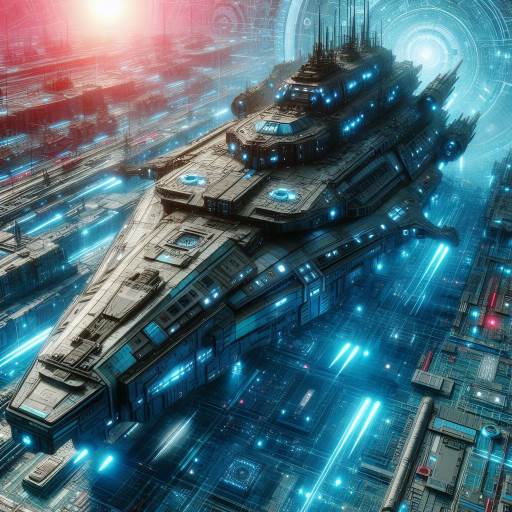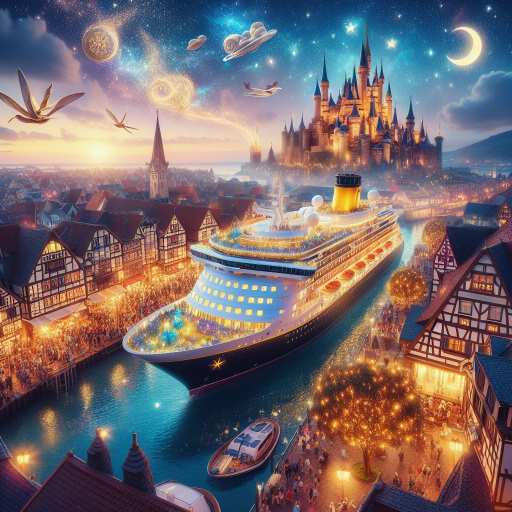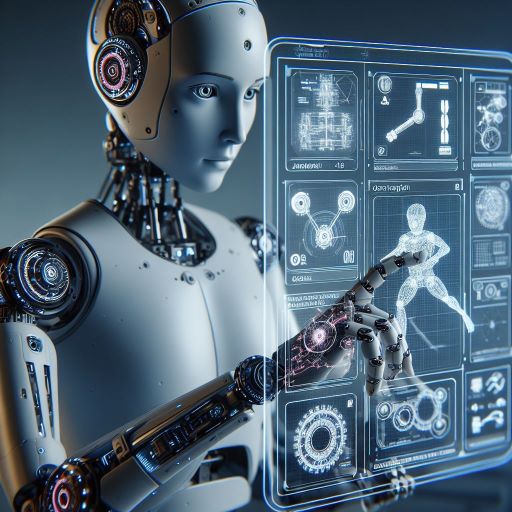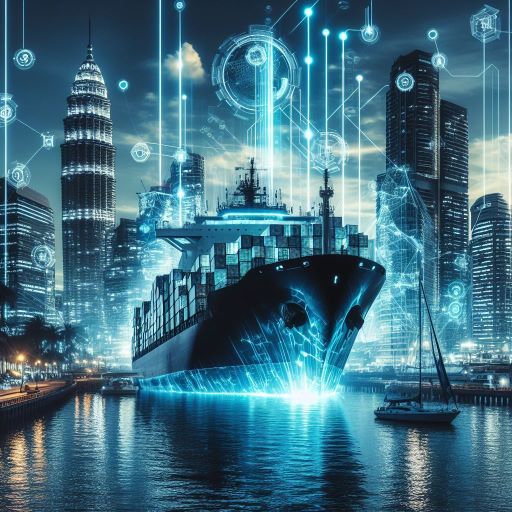In the vast expanse of the world’s oceans, where the horizon stretches endlessly, lies a realm where innovation meets necessity the technology powering modern ships. From the graceful sails of ancient vessels to the towering behemoths of today, the evolution of maritime technology has been a saga of human ingenuity striving to conquer the seas. In this blog post, we embark on a journey to explore the state-of-the-art technologies that define the modern maritime industry, shaping the future of global trade, transportation, and exploration.
Table of Contents

The Evolution of Maritime Technology
Since time immemorial, humanity has looked to the sea for sustenance, exploration, and conquest. The earliest watercraft were simple rafts and dugout canoes, crafted from logs and propelled by oars or the wind. As civilizations advanced, so too did their maritime technology, leading to the development of sailing ships, steamboats, and eventually, the sophisticated vessels of today.
Advanced Navigation Systems in Ships industry
At the heart of every ship lies its ability to navigate the vast and often treacherous waters of the world’s oceans. Gone are the days of relying solely on the stars and the wind for guidance. Modern ships are equipped with state-of-the-art navigation systems that utilize a combination of satellite technology, radar, and sonar to chart their course with pinpoint accuracy.
Global Positioning System (GPS) technology, originally developed by the United States military, has revolutionized maritime navigation. By receiving signals from a network of satellites orbiting the Earth, ships can determine their exact position with unparalleled precision, enabling them to plot efficient routes, avoid hazards, and navigate safely through even the most challenging conditions.
Propulsion and Power in ships
Another area of significant innovation in modern ships is propulsion and power generation. While traditional sailing vessels relied on the wind to propel them forward, today’s ships harness a variety of power sources, including diesel engines, gas turbines, and even nuclear reactors.
Diesel engines, in particular, are the workhorses of the maritime industry, providing reliable and efficient propulsion for a wide range of vessels, from cargo ships to cruise liners. These engines have evolved over the years, becoming more powerful, fuel-efficient, and environmentally friendly through advances in engineering and technology.
Automation and Remote Monitoring
Automation is also playing an increasingly vital role in the operation of modern ships. From automated cargo handling systems to unmanned surface vessels, technology is streamlining processes, reducing labor costs, and enhancing safety at sea.
One of the most significant trends in maritime automation is the adoption of remote monitoring and control systems. These systems utilize sensors, cameras, and data analytics to monitor the performance of shipboard systems in real-time, allowing crew members and shore-based operators to identify issues proactively and take corrective action before they escalate into more significant problems.
Environmental Sustainability
In recent years, there has been a growing emphasis on environmental sustainability within the maritime industry. As concerns over climate change and pollution mount, shipowners and operators are turning to technology to reduce their environmental footprint and comply with increasingly stringent regulations.
One area of focus is the development of alternative fuels and propulsion systems, such as liquefied natural gas (LNG), hydrogen fuel cells, and wind-assisted propulsion. These technologies offer the potential to significantly reduce greenhouse gas emissions and air pollution, paving the way towards a more sustainable future for the maritime industry.
Real World Example of the ship technology

Ever dreamt of setting sail on a carnival cruise ship, exploring the world on the largest ship in the world, or simply relaxing on a luxurious vessel like the Arvia? Modern ship technology is constantly evolving to make these experiences even more enjoyable and, more importantly, safer for passengers. Let’s dive into five impressive tech advancements that ensure smooth sailing on the high seas:
- Autonomous Navigation and Collision Avoidance: Imagine a captain having an extra pair of eyes, or rather, a network of them. Advanced radar systems and cameras coupled with artificial intelligence are being developed to detect obstacles and potential collisions. This can significantly reduce the risk of incidents like the tragic story of a passenger going overboard from a Carnival cruise ship, which hopefully will become even rarer thanks to these innovations.
- Eco-Friendly Propulsion Systems: Gone are the days of billowing smoke stacks. Cruise lines are increasingly adopting Liquefied Natural Gas (LNG) powered engines that significantly reduce harmful emissions. Additionally, air lubrication systems create a bubble curtain around the hull, reducing friction with the water and leading to improved fuel efficiency.
- Advanced Hull Monitoring and Maintenance: Modern ships are like giant underwater cities, and just like any city, regular maintenance is crucial. Remote-operated underwater vehicles (ROVs) are deployed to inspect a ship’s hull for damage or biofouling (the build-up of marine organisms that increases drag). These robotic assistants not only improve efficiency but also eliminate the need for divers to perform risky underwater inspections.
- Smart Ship Management Systems: Big ships require big brains! Integrated ship management systems connect and monitor various onboard functions, from propulsion and navigation to power generation and cargo handling. This real-time data analysis allows for optimized performance, improved safety measures, and better fuel management.
- Passenger Comfort and Entertainment Enhancements: Let’s not forget about the fun factor! Modern cruise ships boast high-speed internet connectivity, allowing passengers to stay connected and share their experiences. Additionally, interactive entertainment systems, virtual reality experiences, and even indoor skydiving chambers are becoming more commonplace, transforming cruises into floating entertainment hubs.
So, the next time you set sail on the Arvia, the world’s largest cruise ship, or any other vessel, take a moment to appreciate the incredible technology silently working behind the scenes to ensure a safe, enjoyable, and unforgettable voyage.
How AI Can Play Main Role in Ships Industry

In the maritime industry, the integration of artificial intelligence (AI) stands as a pivotal development poised to transform ship operations on multiple fronts. At the heart of this transformation lies the ability of AI to harness vast amounts of data and convert it into actionable insights, thereby optimizing various aspects of maritime activities.
One of the most significant areas where AI can make a substantial impact is in navigation and route optimization. By analyzing data ranging from weather conditions and sea traffic to historical voyage patterns, AI algorithms can recommend the most efficient routes for ships, minimizing fuel consumption, reducing emissions, and ensuring timely arrivals. Such optimization not only enhances operational efficiency but also contributes to cost savings and environmental sustainability.
Conclusion
From ancient mariners navigating by the stars to modern seafarers piloting high-tech vessels through the world’s oceans, the technology of ships has come a long way. Today, ships are more advanced, efficient, and environmentally friendly than ever before, thanks to ongoing innovation and technological advancement.
As we look to the future, the maritime industry will continue to evolve, driven by a relentless pursuit of safety, efficiency, and sustainability. Whether it’s harnessing renewable energy sources, embracing autonomous technology, or developing new materials and propulsion systems, one thing is certain: the seas of innovation will continue to shape the future of maritime technology for generations to come.
click here for the more knowledgeable content –> Read New

